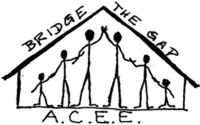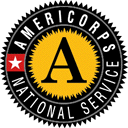|
|

Working with Volunteers/Mentors
A VISTAs primary mission at Sanchez Elementary School is to help teachers and administrators effectively involve the community and other volunteers to support the goals of the school.
There is information about how to recruit volunteers for the school elsewhere in this guidebook.
Your first step BEFORE you begin to recruit ANYONE, however, is to make sure you understand how Sanchez has involved volunteers in recent years, what their immediate volunteer needs are, and ways you can encourage more and more effective volunteer involvement at Sanchez.
Getting Started
- Review the project ideas, sample volunteer task descriptions, and links to other resources to help teachers and school administrators involve volunteers in the classroom that are listed in
Inviting the Community Into the Classroom, an online publication developed by Dana Center staff.
In particular, read carefully the section Sanchez Elementary School Volunteer Recruitment and Management Strategy, a document created with the assistance of Curtis Montague (VISTA 1998-99). It includes sample task descriptions for school volunteers at Sanchez, and details on the school's recruitment strategy and online resources found to be most helpful.
These web sites provide information that will be critical to your success in involving volunteers at Sanchez!
- If you already have immediate volunteer openings, prepare WRITTEN job descriptions for EACH volunteering opportunity. You will review these job descriptions with candidates to make sure they understand the tasks they are volunteering for. You will also use these descriptions in your recruitment of volunteers.
Begin by reviewing the sample descriptions from past years to help you write new ones.
Keep ALL volunteer task descriptions on file; you will need to turn them in at the end of your term to Jayne Cravens at the Dana Center, so she can update the Sanchez Elementary School Volunteer Recruitment and Management Strategy for future VISTAs. This document is also used by non-VISTA volunteer managers throughout the U.S.!
- Encourage teachers to think about ways to involve volunteers. You can put a notice in all teacher boxes at the beginning of the year offering your assistance in thinking about how to involve volunteers and in recruiting volunteers. Include a list of the various things volunteers can do to assist teachers; A Literacy Volunteer Program Model offers 34 volunteer job titles that will help spur teachers' interest (and will also help you when you write the job descriptions). There's a list of ways online volunteers can help at the Virtual Volunteering Project web site.
Continue your encouragement throughout the year for teachers to think about ways to involve volunteers, and ways to help them involve current volunteers more effectively. You can do this through occasional BRIEF notes in their boxes, e-mails, or via the ACEE newsletter. Be sure to highlight teachers involving volunteers throughout the year!
- Set date and time for each month to hold volunteer orientations. Make sure this gets on all appropriate administrators schedules, and that you've secured an area for this orientation to take place.
People who want to be mentors at Sanchez, working one-to-one with a child, must go through the official AISD mentor training workshop. These are held throughout the year by Billie Franke of the AISD office. Or, the Vice Principal at Sanchez can provide the mentoring training, if you already have at least four people ready to get started. The training lasts for about an hour, and you should attend the first training as well!
Your role in matching accepted mentors to students varies on how much the Vice Principal wants to do herself. Be sure to meet with her early in the year to talk about how training and matching will be done.
If you have any difficulties in finding out if potential mentors you refer to Billie Franke's sessions are being trained and referred back to Sanchez afterwards, express your concerns to the Sanchez Vice Principal and ask how to proceed. You might want to set up a one-to-one meeting with Billie yourself to make sure she is clear on how the importance of referring potential Sanchez mentors ASAP to you!
Volunteers for Peace Games require a customized training as well (see other section of this handbook for details).
While both volunteer mentors and Peace Games volunteers need specialized training, the following about first contact and orientation all still apply.
- Only after you have done all of the above are you ready to recruit of volunteers.
First Contact and Orientation
- When a potential volunteer responds, by phone or by e-mail, you should contact that person within 48 hours! (two business days). If you do not contact these people promptly, you will lose them as volunteers. It also sets up a standard that you take them seriously, and that volunteering with Sanchez is serious stuff!
In your reply, thank the person for responding, ask where he or she heard that Sanchez was recruiting volunteers, and provide the dates of the next two orientations (remember that mentors receive special orientations -- see above). Ask the person which orientation he or she will be attending. If the person cannot attend one of the next two scheduled orientations, consider setting up a one-to-one meeting at a time that is more convenient for the person.
Be sure you track the information regarding how many calls/e-mails have come in each month, and how people were referred! (by a newspaper listing, by VolunteerMatch, etc.). You will need to report this information at the end of the year!
Also, make sure that the people that answer the main phones for Sanchez know how to refer calls from potential volunteers! Don't assume that they know this already!
- Using the suggestions for recruiting volunteers, you should be able to generate at least five people per orientation meeting.
- At the orientation meetings, have each person introduce themselves to the group, and say why they are interested in volunteering at Sanchez. Have each person complete an application and background check form. You will return completed forms to the Vice Principal. You will also want to have copies of applications so that you have their contact information as well.
Go over the volunteering openings at Sanchez and find out who is interested in what. Provide each person with a copy of the complete written task description of the opportunity/ies he or she is interested in, and ask everyone to review the information carefully. Make sure everyone understands the commitment they are making in taking on whatever opportunity they are interested in.
Give everyone clear guidelines of how to sign in and out, how to report any problems they are experiencing, and boundaries they need to respect as volunteers (not taking children off school grounds, etc.). Emphasize that responding to your calls and e-mails promptly, reporting their hours and accomplishments regularly, and completing a survey about their experience as a volunteer is part of their commitment (see below). Also hand out a list of dates when there is no school.
You should also talk about the ethnic and economic
make-up of the student body, the school code of conduct, the school's chain-of-command (who the volunteer should contact if there is a problem with the teacher, student, or another volunteer), suggestions for appropriate dress attire, and classroom tips.
Talk about that, sometimes, assignments just don't work out: the volunteer has unrealistic expectations about what he or she is going to get to do, the teacher has unrealistic expectations for the volunteer's knowledge and support, there are personality conflicts, and so forth. Let the volunteers know that assignments already underway can be adjusted, or volunteers can be moved to a new assignment, if circumstances warrant such. Also emphasize the importance of volunteers coming to you with any problems or concerns at any time.
Provide each person with next steps: when can they get started? what do they need to bring or what should they do to prepare? when can they expect notification regarding their acceptance as a volunteer? if this person wants to be a mentor, when is the mentoring orientation? if the person wants to work on Peace Games, when is the next training?
Let people know that they may not all get to volunteer, and that they shouldn't take not being placed personally. Tell them that you do your best to match the best people to the most appropriate opportunities, so that everyone has a satisfying experience.
Be sure you track how many people go through the orientation, complete the applications, etc. You will need to report this information at the end of the year!
FOR ONLINE VOLUNTEERS -- those that are interested in helping via their home or work computers, there is a different orientation method. Talk to Jayne Cravens at the Dana Center for more information.
- Follow up with the Vice Principal regularly, to make sure background checks are completed quickly, so you can get volunteers started within just a few days or weeks after their orientation. If too much time passes between the orientation and the actual placement, you will lose the volunteer.
Volunteers in Action
- On the person's first day as a volunteer, give the person a tour of the school, visit the classroom or other room(s) where he or she will be working, and introduce him or her to the teacher(s) that will supervise him or her. Review the sign in and out procedure, and emphasize its importance!
- After the volunteer's first day, ask what he or she thought about the experience. Ask the teacher as well. Were there any problems or difficulties? Is more support or training needed? Ask these questions again frequently.
Sometimes, it just doesn't work out: the volunteer has unrealistic expectations about what he or she is going to get to do, the teacher has unrealistic expectations for the volunteer's knowledge and support, there are personality conflicts, and so forth. It's okay to redesign volunteer assignments already underway, or to move a volunteer to a new assignment.
- STAY IN CONTACT WITH VOLUNTEERS AND THE TEACHERS INVOLVING THEM! For instance, you may want to send a weekly, bi-weekly or monthly update to current volunteers via e-mail, reminding them of upcoming school events or holidays, highlighting a volunteer in particular, and, always, inviting their feedback about their experiences as a volunteer at Sanchez.
Jennifer San Pedro (VISTA 1999-2000) notes: "It is important that you keep in contact with your volunteers/mentors. Write them a thank-you note over the
holidays and talk to them when you see them in the hall.
Always ask how they need anything and how their
experiences are going. Chances are if you keep a good
relationship with them they will stay."
You will also want volunteers to report in regularly, to talk about how many hours they've volunteered, what they've done, what their upcoming needs are, any problems they are having, and so forth. Emphasize that regularly reporting in is part of their commitment as a volunteer. At the end of the year, you will need to provide a summary of the accomplishments and feedback volunteers have provided.
You should survey the volunteers at the end of the semester, at the end of the year, or at the end of their time as a volunteer. Ask them what they did as a volunteer (you may be surprised at how your perceptions of what they did and their perceptions of what they did are different), what they liked about the experience, what they didn't like, what they learned, what they wish they had known before they got started, what support was most helpful, what support they didn't receive, and so forth.
Do a similar survey for teachers and staff who worked with volunteers!
Remember: the best way to get a message to teachers quickly is through the school e-mail list or to put a message in their school mail box.
And, again -- at the end of the year, you will need to provide a summary of this data.
- When problems arise in working with volunteers, have a look at these online resources for volunteer managers. These resources cover everything from how to fire a volunteer to sample volunteer policies. Also, keep the Vice Principal informed of any difficulties volunteers, or teachers working with volunteers, are experiencing.
- Keep track of people you DON'T match with an opportunity as well! Make sure no one falls through the cracks, or, that you have a clear reason why a person was not accepted as a volunteer. You will need to provide this information at the end of the year.
- Recognize volunteer activities and accomplishments via the ACEE newsletter and ACEE web site. At the end of a volunteer's time with Sanchez or at the end of the school year, give each person a Certificate of Appreciation, a personal thank you note from you, and a letter from either the Vice Principal or the Principal recognizing their service as a volunteer.
- Remember to provide summaries volunteer accomplishments, feedback about the program, etc., as well as numbers of people who inquired about volunteering at Sanchez vs. how many people went through an orientation vs. how many people were matched to assignments. You can see how to format this data here.
Also see this information about the Sanchez Elementary School Online Mentoring Program
|


